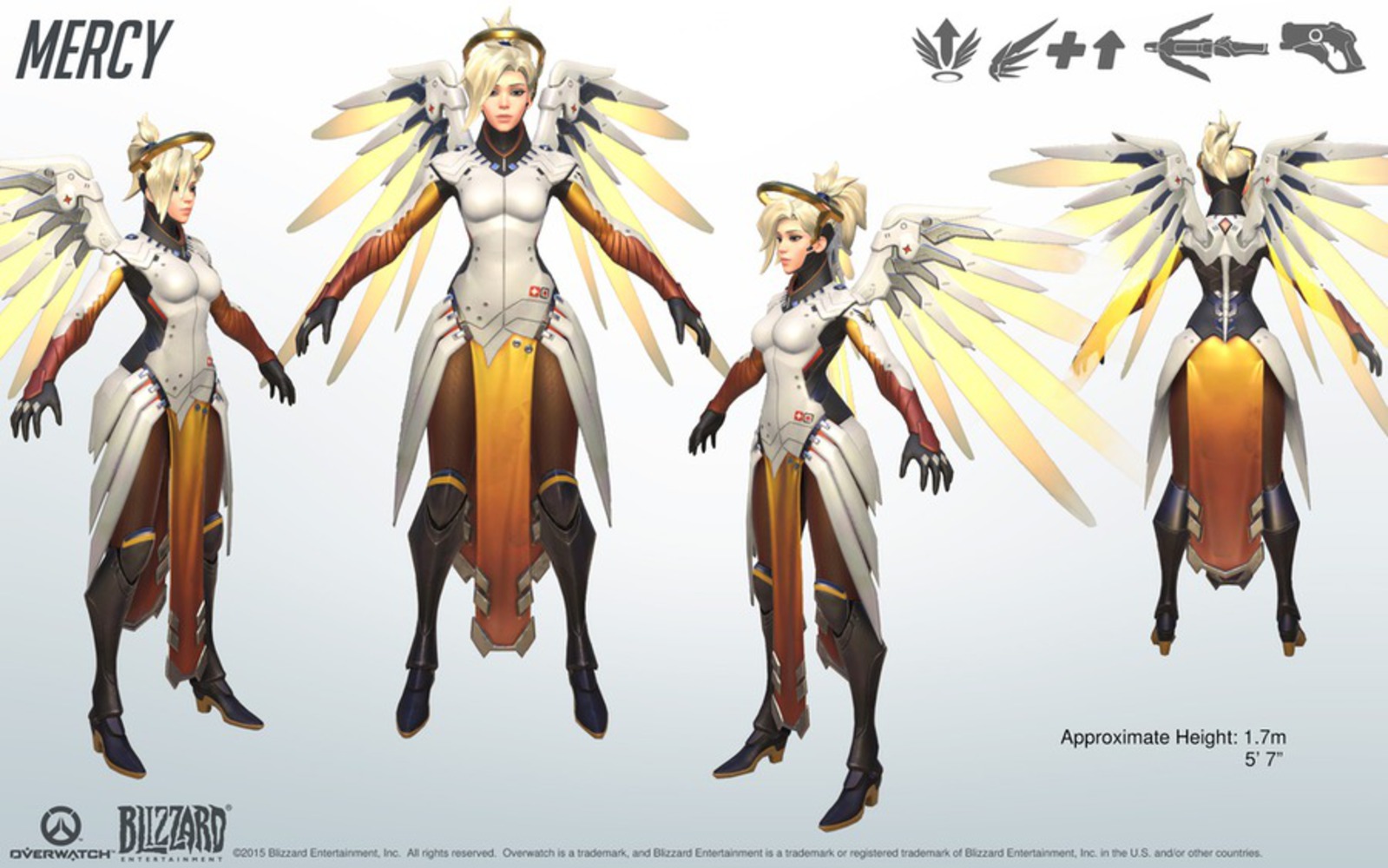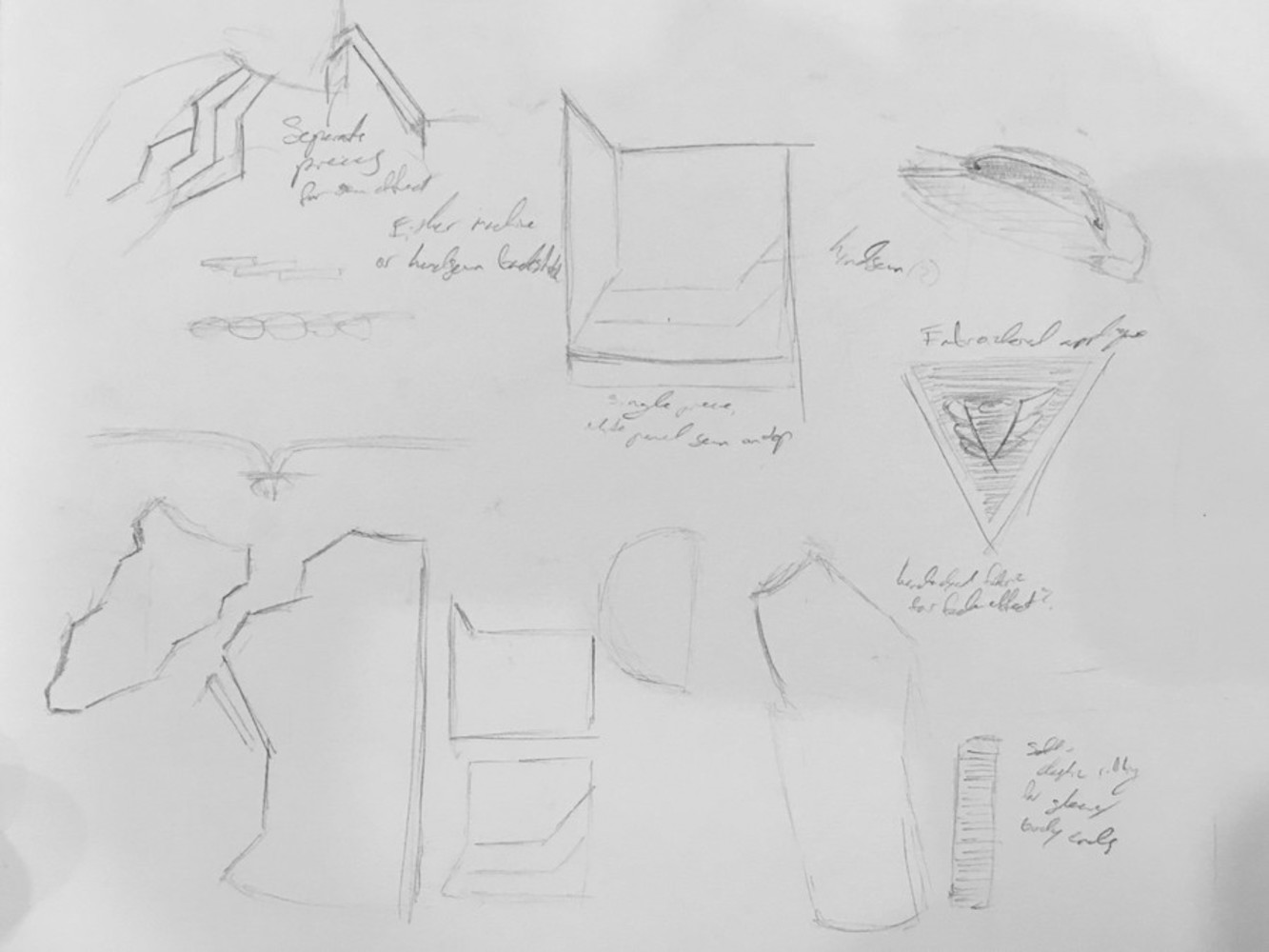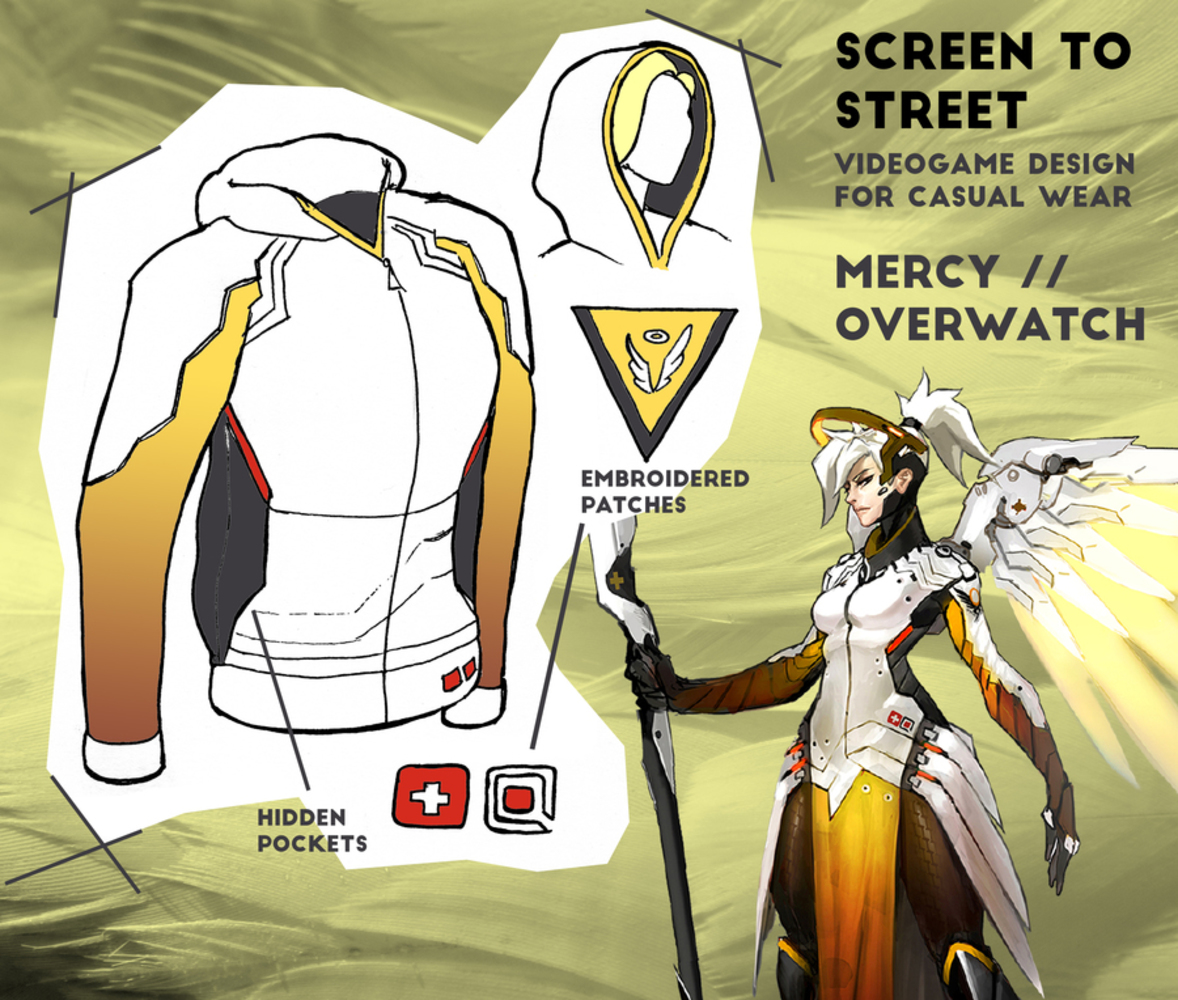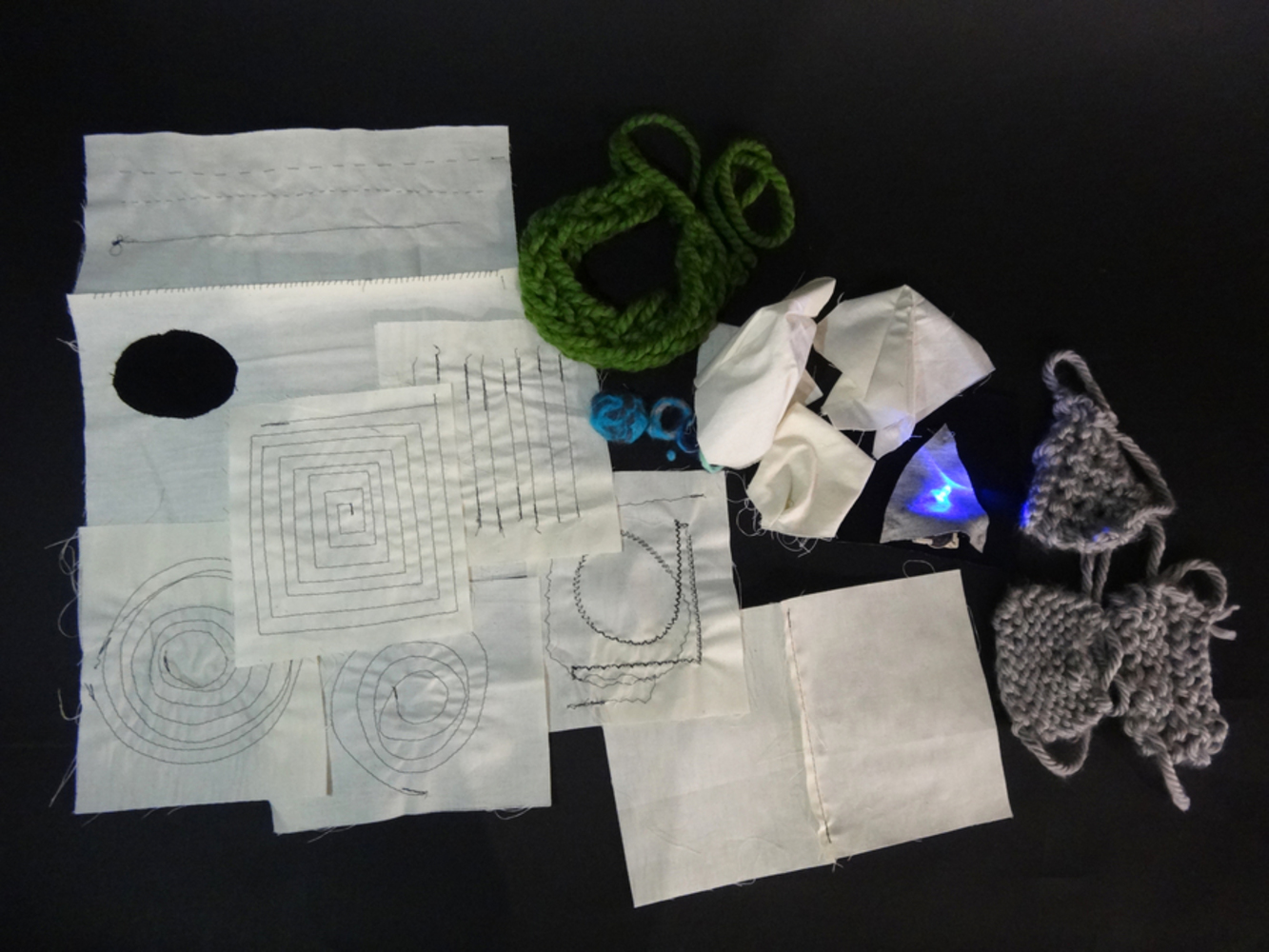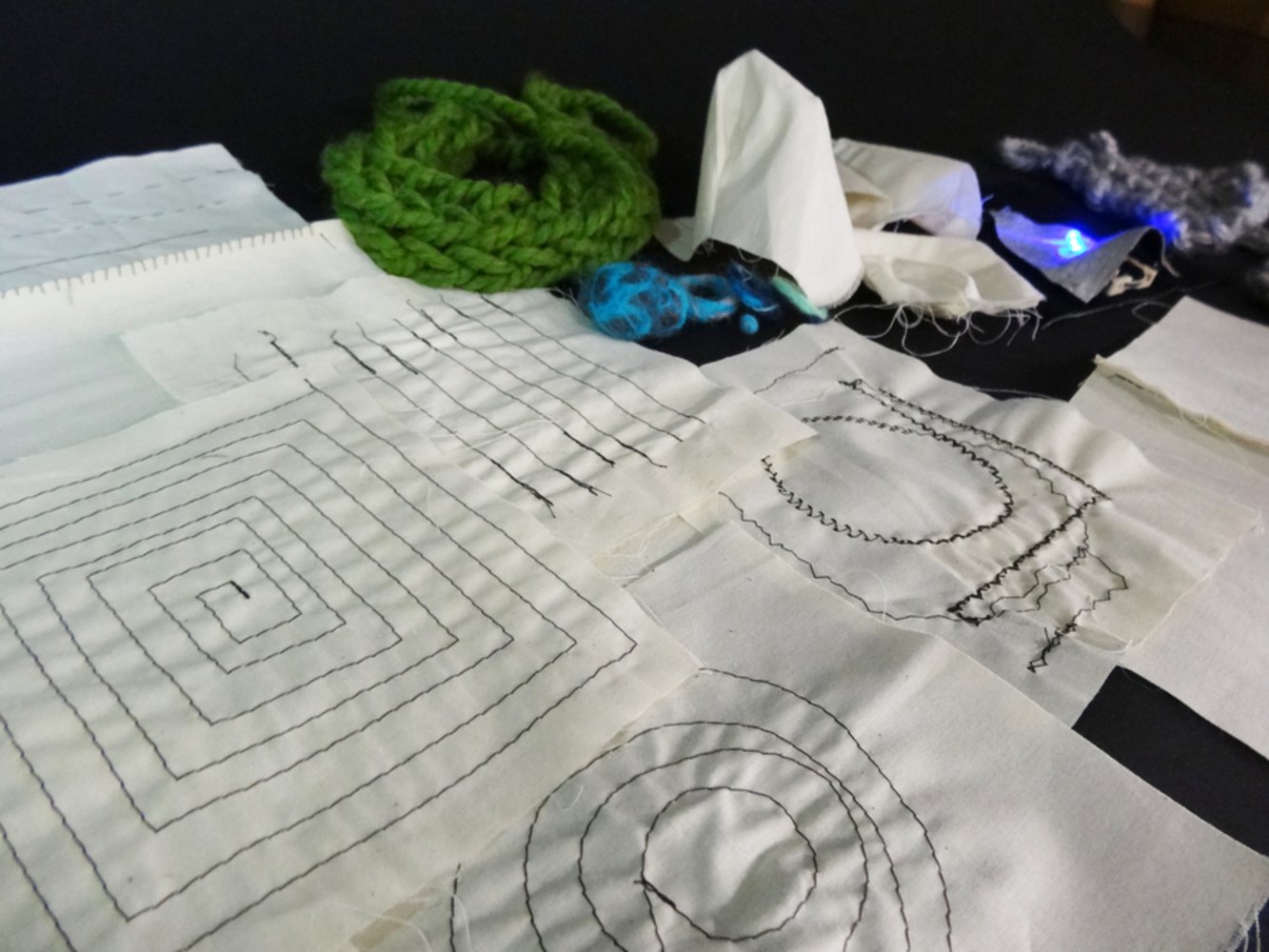Research
Overwatch is set in a near-futuristic world, so many of the designs in the game are oftentimes bright and extravagant, so I wanted to include some of those details in a more subdued manner. In this design, it came more in the way of angular forms that emulate armor plating, which brings the challenge of creating clean lines on an article of clothing that is often attributed with loose comfort. Utilizing what I had learned in class, I figured I could stick with both machine sewing and hand-sewn backstitches in order to carefully piece the patterns together.
In order to understand what the patterns would look like in the first place, I decided to investigate the models used in-game in hopes that I could then translate it over into physical pieces. The character I chose, Mercy, a medical genius and staunch pacifist, is laden with angelic motifs, with several instances of banding to coincide with the shape of her wings. Additionally, most pieces of her armor interlock to create a streamlined torso, which I intend to emulate with the cutouts I included on either side of the body of the hoodie, giving the piece a better sense of form while still being open to movement.
For the general shape of the hoodie, I looked at how panels interlocked in various iterations of hoodies to ultimately come to the final pattern. What I was most surprised by what that the connection between the sleeves and the main body was larger than I thought it would be, with no seam by the shoulder, instead coming closer to the head opening. I made it a point to stay true to this while also attempting to give it some shape through the geometric panels on the upper arms, which should, in theory, keep the form from slumping while preserving the freedom of movement that hoodies provide.
I was really fascinating by the laser-cutting process, and wanted to integrate it somehow in this project. However, I found that there was really no need for it, as the panels are simply to large, and there would likely be no reason for raw edges of the fabric to be showing. Even if there were, most of the fabric that would be used in this piece is light, and would likely be singed by the laser-cutter, interrupting the cleanliness of form that Mercy's design hinges on. Laser-cutting might be considered for the patches, but I thought it would be both easier and washer-friendly to embroider them on instead, as laser-cutting iron-on patches would not hold up to machine washing and drying.
Reference kit provided by Blizzard Entertainment: https://blzgdapipro-a.akamaihd.net/media/reference/mercy_reference.pdf
